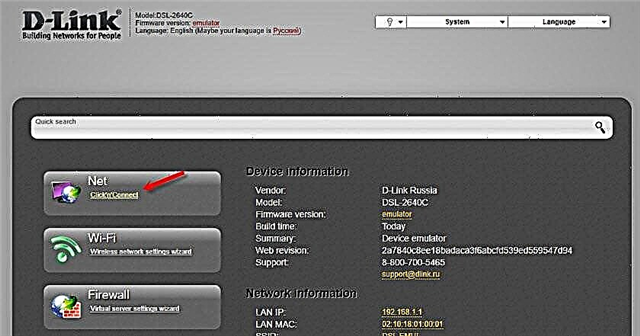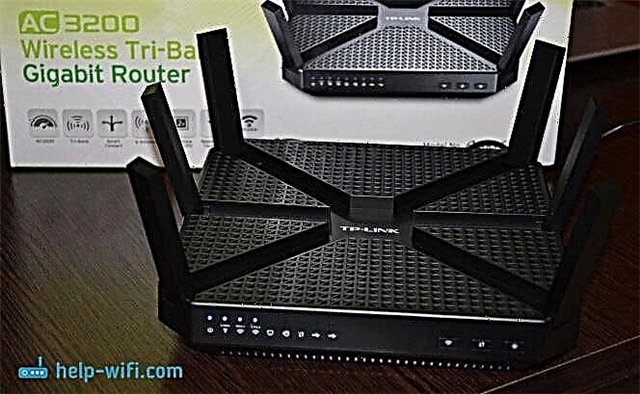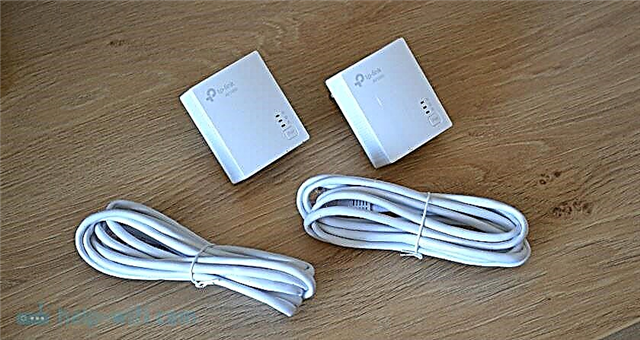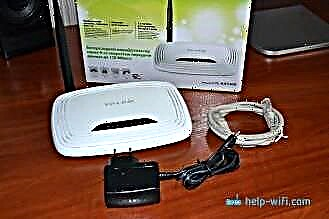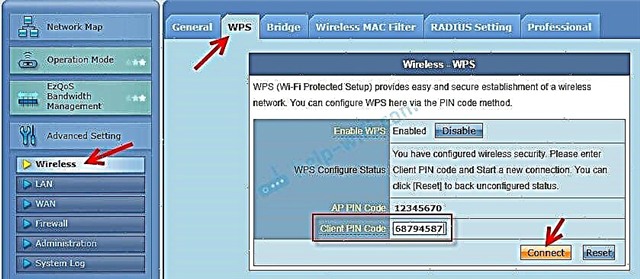This article will be useful to everyone who has seen a "Network Controller" or "USB2.0 WLAN" device with an icon in the form of a yellow exclamation mark on their laptop or desktop computer. And at the same time, Wi-Fi does not work, or a network card (connection via a network cable). Now we will figure out what these devices are, why they are in the "Other devices" section, how to find and download a driver for them and make them work.
I will try to explain everything as simply as possible.
- Network Controller - it can be either a LAN adapter (network card) or WLAN (wireless Wi-Fi adapter). Why is it shown with a yellow icon and is identified as Other Devices? This is because Windows "understands" that this is some kind of network controller (a device for connecting to a network, the Internet), but does not understand which one and how to work with it.
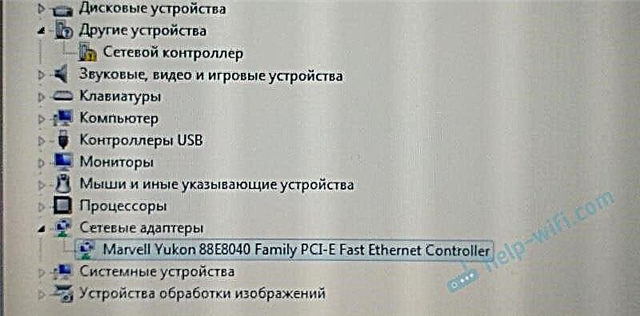 Take a look at the screenshot above. In the Network Adapters section, there is only the Ethernet Controller. This means that the "Network Controller" in this case is most likely a Wi-Fi adapter. It is not detected by the system because there is no driver for this network controller. And all you need to do is download the required driver and install it. What we are going to do in this article.
Take a look at the screenshot above. In the Network Adapters section, there is only the Ethernet Controller. This means that the "Network Controller" in this case is most likely a Wi-Fi adapter. It is not detected by the system because there is no driver for this network controller. And all you need to do is download the required driver and install it. What we are going to do in this article. - USB2.0 WLAN Is another device that you can often see in Device Manager under the "Miscellaneous Devices" tab. It's easier here. This is definitely a Wi-Fi adapter, as the name contains WLAN (Wireless LAN).
 And this is the external USB adapter that you connected to your computer. But due to the lack of the necessary driver in the system, Windows does not know how to work with it. Everything is solved by installing the correct driver.
And this is the external USB adapter that you connected to your computer. But due to the lack of the necessary driver in the system, Windows does not know how to work with it. Everything is solved by installing the correct driver.
And the problem is not that in the device manager there is some kind of "USB2.0 WLAN" device, or "Network controller", but that either the Wi-Fi network or the network card does not work. This most often happens after installing, or reinstalling Windows. After purchasing a new PC or laptop. And also, after connecting the Wi-Fi adapter to a stationary computer.
In Windows 10, there are much fewer such cases. This is because the system "knows" a large number of network adapters and, as a rule, installs the necessary drivers by itself. And in the case of Windows 7 and Windows 8, most often you have to download and install drivers manually. Especially on Wi-Fi adapters. Since network cards in most cases are detected and work automatically.
After installing the driver, an unknown device should be detected, appear on the "Network adapters" tab and work. So let's move on to the most important thing.
What driver to download for the "Network Controller" device?
First, let's try to determine what kind of device it is. As I wrote above, this is most likely a Wi-Fi adapter.
If you have a "Network Controller" in Device Manager on laptopthen look what is on the "Network adapters" tab. If there is only a network card (LAN, PCIe GBE), or nothing at all, then this is definitely a Wi-Fi module.
You need to download the Wi-Fi driver for your laptop from the official website. The driver needs to be downloaded only for your model and installed operating system.
If there was a disk included with your PC (motherboard), laptop, or adapter, then most likely the necessary driver can be installed from there.
I will not describe here how to do this, but simply give links to the necessary articles, according to which you can download the necessary software and install it:
- How to install drivers on a Wi-Fi adapter in Windows 7?
- Driver Installation on Wi-Fi in Windows 10
- Finding and installing the network adapter driver on ASUS laptops
- Installing Wi-Fi and LAN driver for Acer laptop
- What driver is needed for a network card (Ethernet controller)? - if you have a problem with the network card (LAN).
Go to the article that suits you best, find and download the driver, then install it. Everything will work.
If you have this problem on a desktop computerto which you connected an external USB or internal PCI network adapter, then see the method described below (for USB2.0 WLAN).
If you could not identifywhat kind of network controller it is and can not find the driver you need, then use the method that you can find at the end of this article (search by hardware ID).
Driver for USB2.0 WLAN
From the name "USB2.0 WLAN" it is easy to guess that this is a wireless network adapter that is plugged into a USB port. They look something like this:

The adapter you connected must have a make and model. Therefore, the driver for it must be downloaded from the manufacturer's official website. For example: TP-Link, ASUS, Tenda, D-Link, etc. and for a specific model. The software can also be installed from a disc. If possible and the disc was included.
For an example, you can see the article on finding and installing a driver for the TP-Link TL-WN722N adapter.
Likewise with other manufacturers. We go to the official site and through the search on the site, according to the model of our device, we find a page with downloads. Or we search directly by model through Google, or Yandex. But go only to the official sites.
There are Chinese Wi-Fi adapters that do not have a manufacturer or model. Or the manufacturer doesn't even have a website. In this case, you can try to find the required drivers by ID. More on this below in the article.
Usually, there is no problem installing the software on an unknown USB2.0 WLAN device. Since we know the specific model of the device. But still, there are different cases.
The universal way is to search for a driver by hardware ID
In Device Manager, open the properties of the USB2.0 WLAN, Network Controller, or other unknown device.

On the "Properties" tab from the drop-down menu, select "Equipment ID". Copy the first line in the list.

Go to the website https://devid.info/ru/
Paste the copied line into the search field and press Enter, or on the "Search" button.

A list of drivers should appear.
If a message appears on the site "We cannot find the driver", then delete some of the text. Leave only VID and PID information. For example, "PCI VEN_168C & DEV_0032 & SUBSYS_2C971A3B & REV_01" is not found. But for "PCI VEN_168C & DEV_0032" the driver was found.
You can select the version of Windows that is installed on your computer to exclude drivers that do not work for you.

As you can see, my USB2.0 WLAN turned out to be TP-LINK Wireless USB Adapter.
You can open the first driver on the list and download it.

Save the archive to your computer.
How do I install?
Extract the files from the archive to a folder. Your folder contents may be different. There may be subfolders.

If there is .exe file, then run its installation and follow the instructions.
If not (as I have in the screenshot above, only files), then in the device manager, right-click again on "Network controller" or "USB2.0 WLAN" and select the "Update driver" menu item.

Click on the item "Search for drivers on this computer".

Select the folder with the drivers and click "Next".

If the driver is suitable for the device, the installation will proceed and a message will appear that "Windows has successfully updated the drivers."

That's all. The device with the yellow icon in Device Manager should disappear, and the new adapter should appear in the Network Adapters section.

Wi-Fi should work. Well, or a network card.
If you installed a Wi-Fi adapter, and the computer still does not see the Wi-Fi network (but the icon has changed), then check if the WLAN Autoconfiguration Service is enabled.
I really hope I was able to help you. If something went wrong for you, then ask questions in the comments. Attach screenshots from the device manager immediately. I try to help!

 Take a look at the screenshot above. In the Network Adapters section, there is only the Ethernet Controller. This means that the "Network Controller" in this case is most likely a Wi-Fi adapter. It is not detected by the system because there is no driver for this network controller. And all you need to do is download the required driver and install it. What we are going to do in this article.
Take a look at the screenshot above. In the Network Adapters section, there is only the Ethernet Controller. This means that the "Network Controller" in this case is most likely a Wi-Fi adapter. It is not detected by the system because there is no driver for this network controller. And all you need to do is download the required driver and install it. What we are going to do in this article. And this is the external USB adapter that you connected to your computer. But due to the lack of the necessary driver in the system, Windows does not know how to work with it. Everything is solved by installing the correct driver.
And this is the external USB adapter that you connected to your computer. But due to the lack of the necessary driver in the system, Windows does not know how to work with it. Everything is solved by installing the correct driver.

